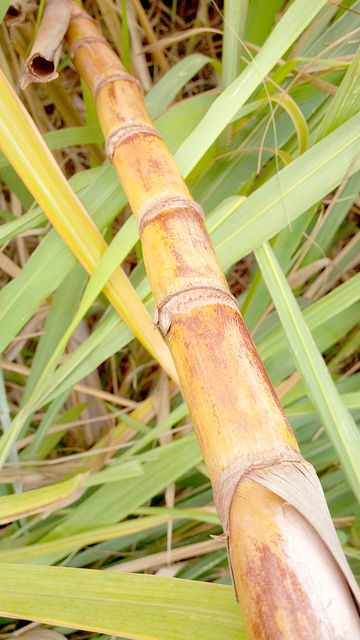There’s a new sugar plantation on Kauai. The waving fields of cane cover 7 acres, and they represent one new-but-old facet of the broad diversity of agriculture on the island. The diversity of agriculture on our island is something to
There’s a new sugar plantation on Kauai.
The waving fields of cane cover 7 acres, and they represent one new-but-old facet of the broad diversity of agriculture on the island.
The diversity of agriculture on our island is something to behold. From the strange-looking fruits you’ll find at farmers’ markets, to local sheep and cattle, to seed crops, traditional crops like taro and sweet potato, vanilla and spices, coffee and herbal teas, organic vegetables, agroforestry and lots more. And now, the restoration of sugar cane cultivation.
This cane grows on Gay & Robinson land within sight of the silenced Olokele Mill, which closed six years ago after 120 years of cane cultivation ended on the Gay & Robinson land.
This sugar cane will eventually be used to make locally produced rum.
The Koloa Rum’s cane is processed where it grows on a portable mill specially made for the company.
“We have a crusher mounted on a trailer. We hand-harvest and crush the cane in the field, store the juice in a tank and bring it to the distillery,” said Bob Gunter, president and CEO of Koloa Rum.
Former sugar workers help farm the cane, and the rum is manufactured in the old Hawaiian Fruit Specialties plant in Kalaheo — a jam and jelly business started by the Tateishi family in 1931.
Koloa Rum bought the jelly factory in 2007 for the food-grade processing facilities, the appropriate zoning and the associated infrastructure. The company continues to produce jams and jellies under Kukui Brand, but has added distilling gear, including a 68-year-old copper still.
When the rum company received its federal, state and county permits, it bought raw sugar from Gay & Robinson as the feedstock for the distilling process. When Gay & Robinson cane was no longer available, Koloa Rum began purchasing sugar from Alexander & Baldwin’s HC&S factory on Maui — the last full-scale sugar plantation in Hawaii.
Koloa Rum continues to buy HC&S sugar, but is now aiming to supplement that with Kauai-grown sugarcane from the West Kauai fields.
Within the next several months, Gunter said Koloa Rum will also begin planting cane in Koloa. The company has leased 18 acres along Maluhia Road in Koloa, across from Anne Knudsen Park. There, it plans to build a production and warehousing facility, administrative offices, a tasting room and store, and a small museum in a refurbished Grove Farm Plantation camp house.
He also hopes to grow 10 to 12 acres of cane at Koloa, to add to the raw sugar for rum-making.
Rum is an alcoholic beverage distilled from sugar, cane juice or molasses, which is a byproduct of making granular sugar. Initially, Koloa Rum sold most of its products from the tasting room and store at the Historic Kilohana Plantation between Lihue and Puhi. Now they are available throughout Hawaii, and in select retail outlets in the Mainland U.S. and several foreign countries.
The company produces a white, a gold and a dark rum, a spiced rum and a coconut rum, and a line of ready-to-drink cocktails. And it has just started selling a new Kauai Coffee rum, using coffee beans from the Kauai Coffee fields of West Kauai.
It is all part of the remarkable diversity of agriculture on the island. While Kauai’s economy is more dependent on tourism than any other Hawaiian county, its diversified agriculture ventures are holding on, and in some cases even growing. It is supported by a number of organizations, including the Kauai County Farm Bureau and Family and Friends of Agriculture.
•••
Jan TenBruggencate is a communications consultant, author and retired newspaper reporter who lives on Kauai. He is also a canoe paddler, beekeeper and active volunteer.


